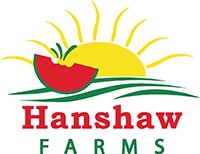Food Safety from Farm to Table
SAFETY STANDARDS
Shoppers seek more information about their food than ever before. Hanshaw’s traceability program enables us to trace all products back to the country of origin, state, farm, harvest crew, and the packing facility within that state or country. At the packing facility, produce is identified with a code indicating the farm and harvest crew and the information is labeled on each product box or container.
We do this in order to extend our Food Safety communications to our customers and consumers for the following reasons:
We can collect real-time feedback from consumers linked to the exact watermelon they purchased.
Identify trends in product quality and freshness.
Speed up our food safety communications that link the first and last mile of the supply chain from the seed to the store.
General Requirements
All watermelon handlers are required to have a complete food safety compliance and implementation plan signed by senior management. This plan includes a systematic risk-based hazard analysis of all operations from farm to shipment. A written trace back program is also required.
Environmental Assessments
Pre-season and pre-harvest assessments are required to make sure conditions that can affect food safety, such as animal intrusions, flooding, proximity to animal feeding operations, etc. are not present, or have been properly mitigated.
Water Use
A written procedure for water testing, sampling frequency, collection methods, etc. is required along with records cataloging all irrigation water systems used. In packing facilities, any water used directly on watermelon or food contact surfaces must meet EPA microbial standards for drinking water. Water management plans must include preventative controls, testing and monitoring provisions and verification procedures.
Soil Amendments
Certification and documentation for soil amendments, including compost and fertilizers, are required by the program.
Worker Safety, Hygiene and Training
Audits verify that all operations are in compliance with the program’s requirements in the areas of worker practices, hygiene, safety, field sanitation and employee training provisions.


